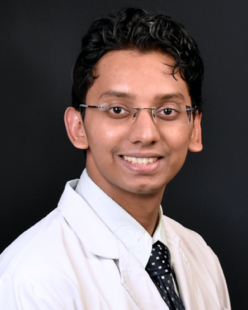The word ‘Strabismus’ is derived from the verb strebloun meaning “to turn”. It is a confusing and less focussed entity and yet quite interesting. In ancient era, doctors proposed the use of mask to hide the deviated eye and get rid of these unsightly variations. Many surgeons attempted the correction of strabismus over years. A surgeon worth mentioning is the infamous Chevalier John Taylor (1703–1772), who would remove a strip of conjunctiva(without touching extraocular muscles) and patch the normal eye. The squinting eye would eventually take up fixation and strabismus was deemed cured. He was long gone to the next town before the patch was removed and the chicanery was exposed. Years later, the first documented strabismus surgery was performed by Johann Friedrich Dieffenbach on October 26, 1839. He corrected esotropia on a 7 year old child by medial rectus myotomy.

In the modern era when the ophthalmic practice was partitioned from otorhinolaryngyiology, it was time for Pediatric ophthalmology and strabismus to be recognized and practiced separately as well. Costenbader Society was amongst the first Strabismus society to be formed in 1967 which was succeeded by American Association of Pediatric Ophthalmology in 1973. This wave of strabismus had shown its effect in India as well, where the first Strabismological society of India was formed in 1982 with six founding members i.e. Prof. Prem Prakash from AIIMS New Delhi with Dr. Vijayalakshmi from Madurai, Dr. T.S. Surendran from Madras (Chennai), Prof. Hanumantha Reddy from Hyderabad, Dr. B.S. Goel from Aligarh and Dr. Narang from Ahmedabad. They were eminent and distinguished surgeons and teachers in the field of strabismus and pediatric ophthalmology in India. They all created a staggering legacy and generated well-known surgeons who are an epitome for many new ophthalmologists.
Recently, there has been a rise in the interest amongst ophthalmology residents who aspire to master the field of pediatric ophthalmology and strabismus, but only a handful of ophthalmic institutes provide training in this sub-speciality. As per WHO, one children eye care center is required for every 10 million people, where at least one specialty‑trained or oriented ophthalmologist should be available. At present, India has 69 centers that amount to 1 per 18.6 million people. These figures shouts out loud that we need to nearly double up the numbers. Currently approximately 16 pediatric ophthalmology subspecialty training centers provide learning opportunities to the budding ophthalmologists. Each year, about 30-35 fellows are trained at these institutions. Hence, we need to expand our capacity to train and encourage more residents to apply for training. India with its constantly expanding population combined with rich experiences and expertise of our teachers, provides a great platform to young doctors to practice and provide an aid to the coming generation in the world of strabismus and pediatric ophthalmology.

Dr Mayank Jain
MBBS (MAMC Delhi), MD (AIIMS Delhi), FICO (UK), MRCS (Ed), FLVPEI (Hyd), Ex-Consultant Aravind Eye Hospital (Madurai)
Consultant Pediatric Ophthalmology, Strabismus and Neuro-ophthalmology ASG Eye Hospital, Jabalpur, India
